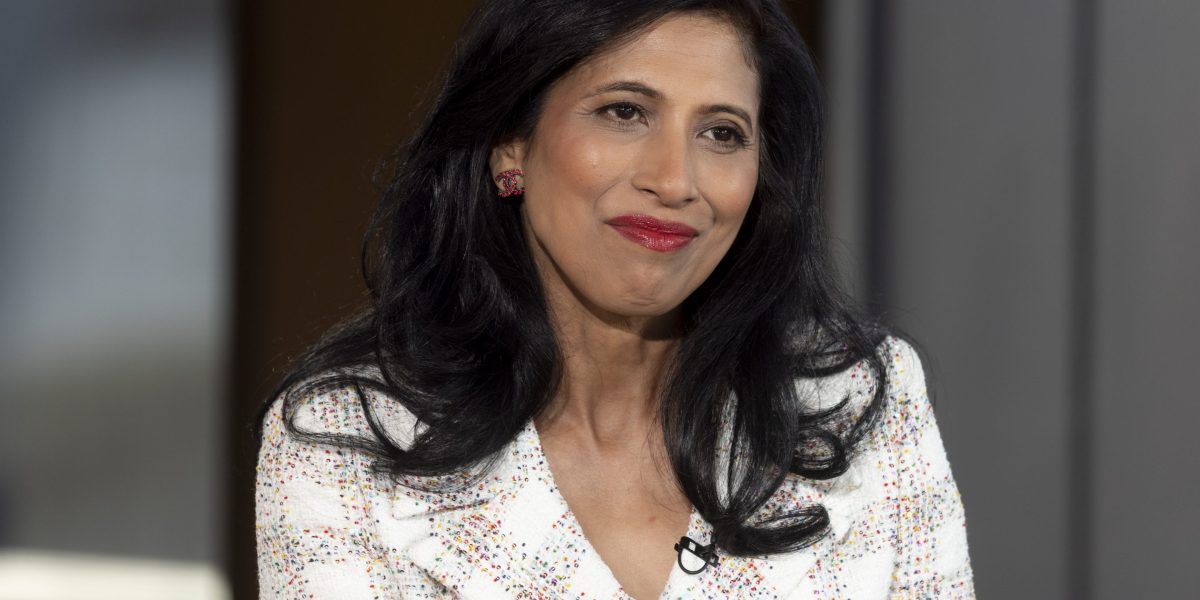Chanel’s second female global CEO Leena Nair, who has worked to increase gender diversity in the workplace, recently learned that OpenAI’s ChatGPT had a much different idea about the demographic makeup of the legacy luxury brand.
Nair and her team visited Microsoft’s Seattle headquarters and spent time experimenting with ChatGPT, Nair said in a recent Stanford Graduate School of Business “View From The Top” interview.
“We’re like, ‘Show us a picture of a senior leadership team from Chanel visiting Microsoft’—it is all men in suits,” she said.
Nair’s Silicon Valley trip also included a visit to Google and other tech firms—part of Chanel’s push into AI investment, including Lipscanner, an AI-powered app allowing users to virtually try on lipstick, which it introduced in 2021. But she said the image ChaptGPT created to depict her team failed to account for Chanel’s employee makeup of 76% women—including the company’s own chief executive. She added that 96% of the brand’s clientele is also women.
“It was a 100% male team, not even in fashionable clothes,” she said. “Like, come on. This is what you’ve got to offer?”
Fortune asked ChatGPT to generate an image with Nair’s same prompt, and it created an image of both men and women. Chanel and OpenAI did not immediately respond to Fortune’s request for comment. Microsoft declined comment.
Gender biases in AI—and luxury
ChaptGPT has a history of slighting the movement of women in leadership roles. A 2023 study from UCLA showed that when ChatGPT and Alpaca, a large-language model (LLM) built by Stanford University, were both asked to write recommendation letters for male and female candidates, they used words like “expert” and “integrity” to describe men, and “beauty” and “delight” to describe the women. LLMs have also previously been more likely to assume historically male-dominated occupations like doctors are for men, and will automatically latch “he” and “him” pronouns to those occupations.
Nair believes that integrating AI into her company is non-negotiable, but plans to introduce measures to address biases and hallucinations that continue to plague the technology.
“AI is everywhere, yes, and it’s going to be transformative in our world, so luxury has to engage with it. Chanel has to engage with it,” Nair said.
“It’s so important that we keep the ethics and integrity of what we’re doing,” she added. “I constantly talk to my friends in tech, all the CEOs, saying, ‘Come on, guys, you gotta make sure that you’re integrating a humanistic way of thinking in AI.’”
The careful AI-vetting process aligns with Nair’s previous work to address gender disparities in her own workplace. Since her tenure at Chanel began in 2021—after working 30 years at Unilever, where she rose to the rank of chief human resources officer—Nair has increased the company’s percentage of female managers from 38% to about 60%.
Nair’s role as global CEO disrupts a long line of male executives that have helmed the company. Beyond Maureen Chiquet, who served as Chanel’s first female global CEO from 2007 to 2016, no other woman besides Nair has had the title of chief executive in the brand’s 114-year history. Nair is also the company’s first Indian CEO. The head of a company that frequently invokes the radical fashion ideology of their female founder and designer, Gabrielle Chanel, Nair isn’t shy in her desire to continue to deviate from Chanel’s long line of male executives.
“I’ve been the first at every job I’ve done,” she told the Wall Street Journal in 2023. “The first woman, the first brown person, the first Asian, the first Indian—but I don’t want to be the last.”

